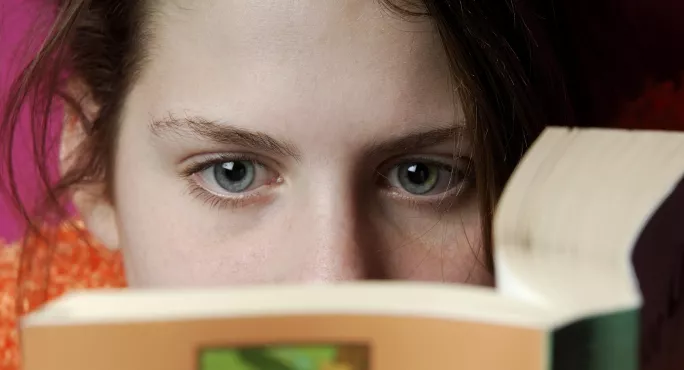The 9 essential components of a KS2 reading scheme
Share
The 9 essential components of a KS2 reading scheme
After the shock results of the key stage 2 reading test last year, there is barely a primary school in the country that hasn’t prioritised reading this year. There are many creative ways of encouraging not only a love of reading, but a high level of competence in the subject. You’ll have your own, of course, but here’s a reminder of some of the basics that a good reading scheme can’t do without.
1. Independent reading
Reading is rarely collaborative. So, whether preparing children for tests or not, we need to set them up to be independent readers - for future schooling and for their own pleasure. Anderson, Wilson, and Fielding (1) found that the amount of time students spent in independent reading was the best predictor of reading achievement. However, children shouldn’t spend endless amounts of time reading without purpose; all reading in the classroom should be purposeful and lead to one of the following activities.
2. Independent written work
In real life, our comprehension of a text is rarely verbalised, let alone written down. But tests that require written answers to comprehension questions are embedded in our education system. We must prepare children to answer these well, so that they can show their levels of understanding. Reading Reconsidered by Doug Lemov et al (2) notes that “the strategic use of writing made reading and discussions of reading more rigorous, focused, productive and engaging”.
3. Reading aloud
Reading aloud allows children to access high level texts, enables them to hear how unfamiliar language and sentence structures should sound and is proven to aid comprehension of a text; teachers should regularly read aloud to children. The Teachers as Readers project also found that hearing books read aloud gave children a model for their own independent reading. Children also benefit from opportunities to read aloud themselves.
4. Teacher-led discussion and modelling
‘Book talk’ - where an adult models a reader’s thoughts and encourages children to do the same - can be the most enjoyable part of a reading lesson. If children have already independently given written responses to questions, a discussion will provide them with the opportunity to add to or edit their answers. This should also lead to the teacher giving model answers to questions, either verbally or in writing.
5. Questioning
Effective questioning has a very important role to play in reading lessons, not only as part of whole-class or group discussions, but on a one-to-one basis. If a child asks a question, a skilful teacher will ask a question in return and refer the child back to the text, rather than instantly providing a model answer. Many pre-made comprehension activities do not have clearly-written questions so the ability to write unambiguous, bespoke comprehension questions is also a must.
6. Focus on vocabulary
Having a good vocabulary is the gateway to understanding - if we don’t understand the words we read, then we can’t understand a text. The 2016 KS2 test specifically tested vocabulary, so we need to provide children with opportunities to hone skills such as morphemic and contextual analysis. It’s also a good idea to explicitly teach unfamiliar words before children encounter them in the text.
7. A range of texts
Prioritising reading on the timetable will give you plenty of time to provide the children with a vast range of text types. Within one lesson you might only look at two linked texts, but over time you should ensure that children read widely. Anything with printed or spoken words, films and pictures are all fair game for a reading lesson. Pairing a fiction and a non-fiction text can increase understanding of the fiction text and give more contexts for the non-fiction text. It’s also a great way to provide opportunities for discussion of other issues, from world affairs to grammar and punctuation use.
8. Deliberate focus on skills
Don’t just ask random questions, have random discussions or use random texts ─ be deliberate. Ask: “What particular reading skill do I want the children to work on today?” and design all the elements of the lesson around this. It seems obvious, but many reading lessons are based on answering whatever questions spring to mind. Instead, teachers should read the text and look for opportunities to teach, for example, inference skills, or vocabulary skills.
9. A teacher who loves reading
Even the most finely-crafted reading lesson will miss the mark if the teacher is not enthusiastic about reading. All this will come more naturally to someone who reads and understands books themselves. The Teachers as Readers project (3) revealed that teachers who were readers “made a positive impact on children’s desire to read and frequency of reading at home and at school” and showed that attainment was positively impacted as a result.
References
- Growth in Reading and How Children Spend Their Time Outside of School
Richard C. Anderson, Paul T. Wilson and Linda G. Fielding
Reading Research Quarterly
Vol. 23, No. 3 (Summer, 1988), pp. 285-303
- Reading Reconsidered
Doug Lemov et al
http://teachlikeachampion.com/blog/writing-reading-excerpt-reading-reconsidered/
- Teachers as Readers project
https://researchrichpedagogies.org/research/theme/reading-aloud
Cremin, Teresa; Mottram, Marilyn; Collins, Fiona; Powell, Sacha and Safford, Kimberly (2009). Teachers as readers: building communities of readers. Literacy, 43(1) pp. 11-19.
Aidan Severs is an assistant vice-principal at a primary school in the North of England
Want to keep up with the latest education news and opinion? Follow TES on Twitter and like TES on Facebook




